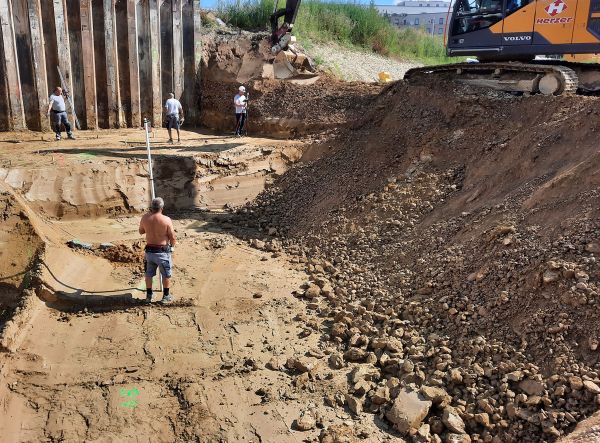RE-FORM earth - Earth Building for Building Sector Transformation
Short Description
Running Time
1.1.2024 – 31.12.2026
Initial situation, contents and expacted results
Considering the ecological and social impacts as well as the immense amount of materials used in the construction sector, it becomes clear that this field offers a significant lever for achieving climate and environmentally relevant savings in energy consumption, resource demand, and greenhouse gas emissions. Materials that are renewable or nature based and can be utilized with minimal energy expenditure ideally meet these requirements.
The RE-FORM earth project is developing various solutions for integrating clay in the construction sector:
- Establishment of planning principles for the construction of deconstructable buildings using circular, ecological, regional building materials
- Assessment of the impact of clay building materials on indoor air quality, and consequently on the health and comfort of the occupants
- Development of planning basis for the production and application of tempered rammed earth building components
By developing building component structures with a certain content of clay and integrating them into the baubook data platform, planners and contractors have access to data on ecology (OI3), recyclability, and resource demand for components with clay content.
In the context of pollutant measurements both in the indoor air of buildings with clay content and in the excavated material itself, valid data are collected to dispel existing concerns regarding the negative health impacts of clay building materials. The focus lies on the radiation exposure (radon, thoron) from clay as well as potential soil contaminants.
Rammed earth building components with integrated heating or cooling coils can optimally utilize fluctuating renewable energy due to their high thermal storage mass. A tempered rammed clay wall is constructed in the test box of AEE INTEC to investigate its impact on room climate and energy demand.
The use of clay as a recyclable material reduces both resource and energy demand due to its unlimited reusability, low energy consumption in manufacturing and preparation, and energy savings in cooling due to its ability to regulate air humidity.
The application of clay is not new, as it is one of the oldest building materials used by humanity. Confronting current challenges such as biodiversity loss, global dependencies, and primarily climate changes offers the opportunity to reinterpret clay construction and adapt it to today's standards, thus making clay viable again for modern construction requirements.
Project Partners
Projektleitung
Ute Muñoz-Czerny
IBO – Österreichisches Institut für Bauen und Ökologie GmbH
Alserbachstraße 5/8, 1090 Wien
Tel.: +43 1 3192005
E-Mail: ibo@ibo.at
www.ibo.at
Projekt- bzw. Kooperationspartner:innen
- AEE – Institut für nachhaltige Technologien
- AGES – Österreichische Agentur für Gesundheit und Ernährungssicherheit
- ZFE – Zentrum für Elektronenmikroskopie Graz


